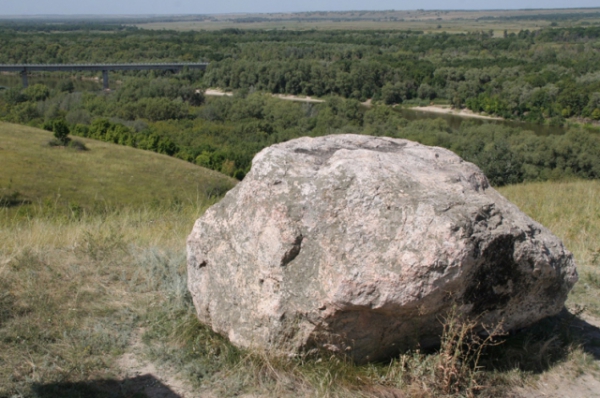Slashchevskiy Valun
Nizhnehopyersky Natural Park attracts its guests by amazing geological formations – Ice boulders (rus. Valun). These huge ice granite stones in 2-3 meters height were left after ice melting. Such boulders cover Kalach hill especially the right bank of the Hopyer River. The largest stone (2 meters height and 3 meters in diameter) is located on the downhill of the Hopyer Valley, near Slashchevsky Village after which it was named – Slashchevsky Boulder Stone.
The boulders look like huge pieces of grey granite or big splinters of pink sandstones and even because of their appearance it is clear that they are not of local origin. Before appearing here, near the banks of the Khopyor River, the granite blocks were inside the Scandinavian ices, 2000 km from the Khopyor. The history of the geological formation of these landscapes says that during the Quaternary Period the Russian Plain was covered with ice several times. There are four glaciations: the Don, Dnieper, Moscow and Valdai ice sheets. The Don Glacier used to be the hugest one. It appeared on the Scandinavian Peninsula. The thickness of the glacier on the Peninsula reached up to 3 metres. It moved to the southern direction covering the Russian Plain. Moving down the plains of the Dnieper River and the Don River, the glacier formed the Dnepr and Don ice tongues. The Donskoy tongue of the glacier covered the whole north-western part of the Volgograd region. Moving from the Scandinavian mountains the glacier draggled with itself for 2000 km everything that it met on its way including huge boulder stones.
When the glacier melted and the water drained by rivers in the Sea of Azov and the Black Sea, the stones left at their places, silent witnesses of the geological events that took place about five hundred thousand years ago.
The Slashchevskiy Boulder Stone is of great historical importance. It is a kind of a boundary stone on the southern part of the Don glacier tongue.
